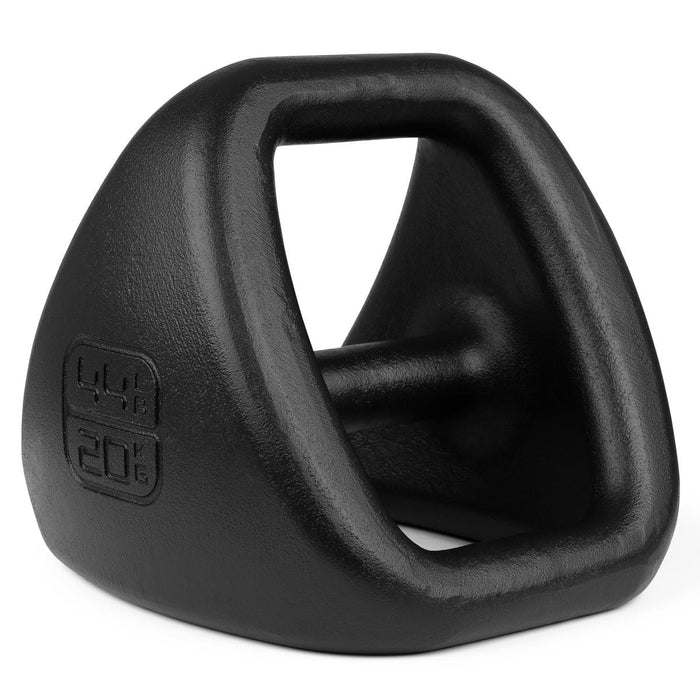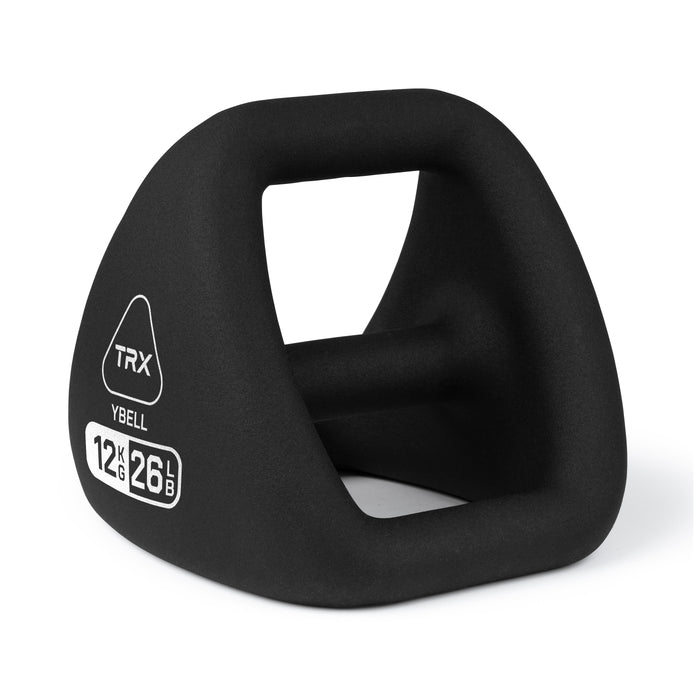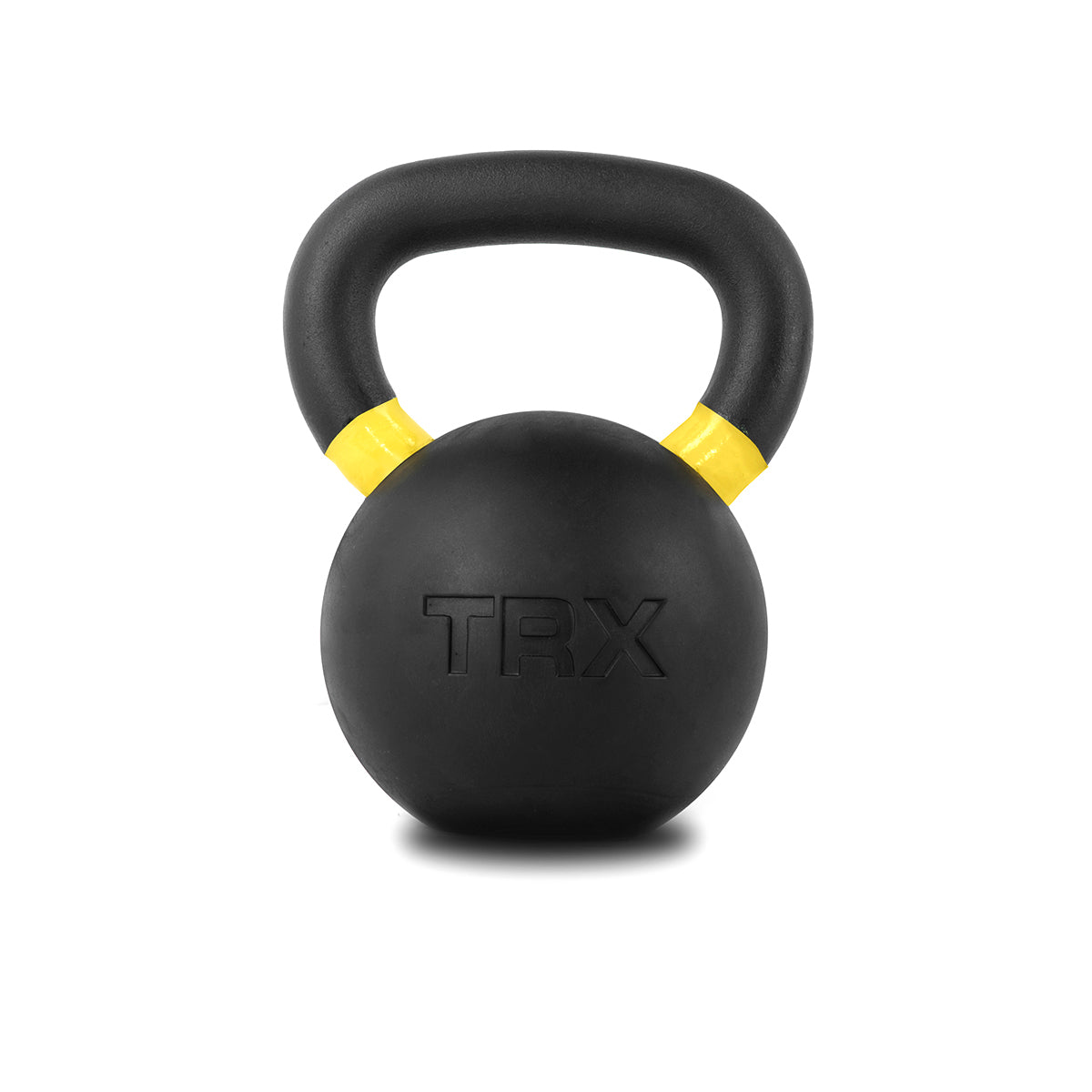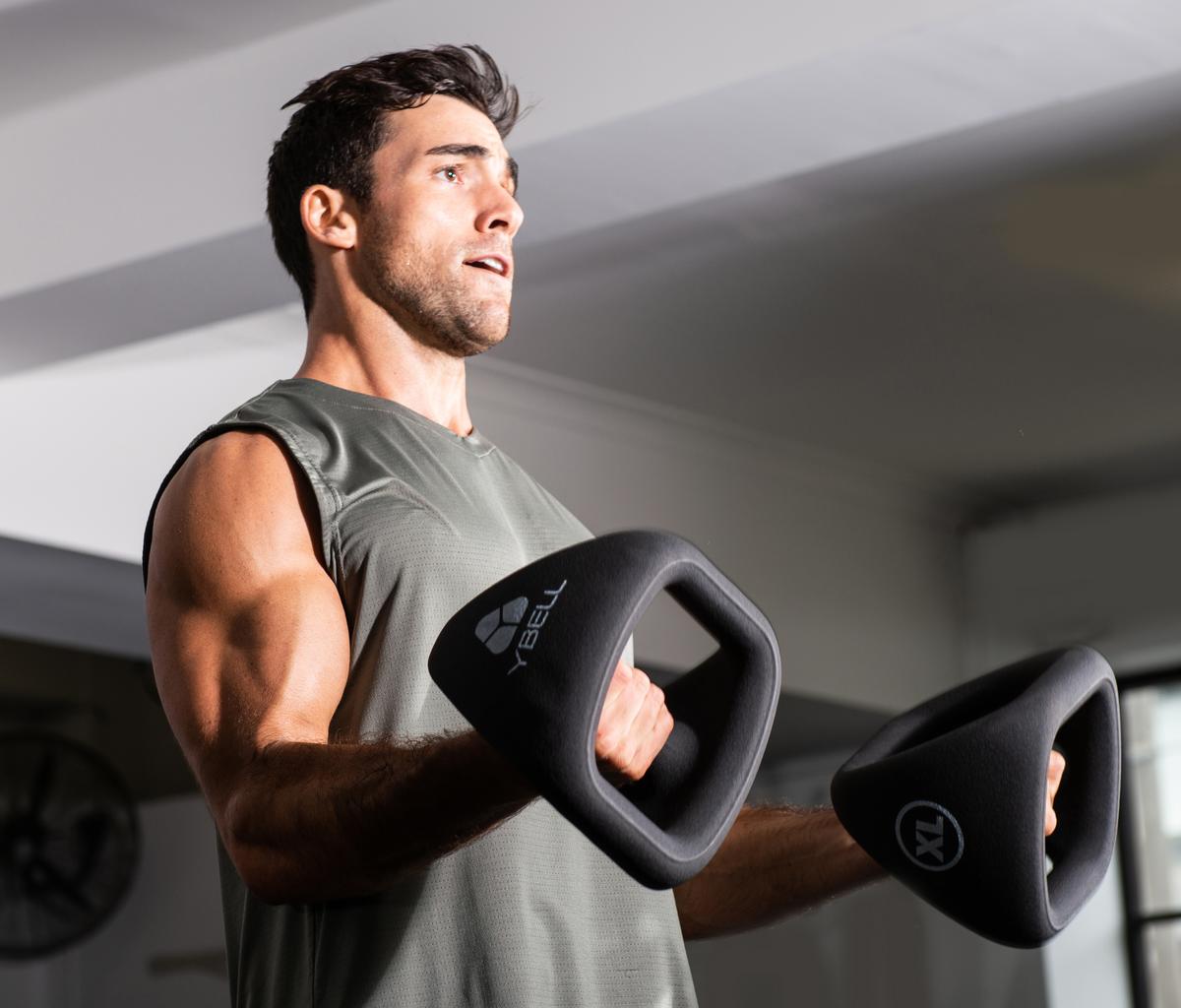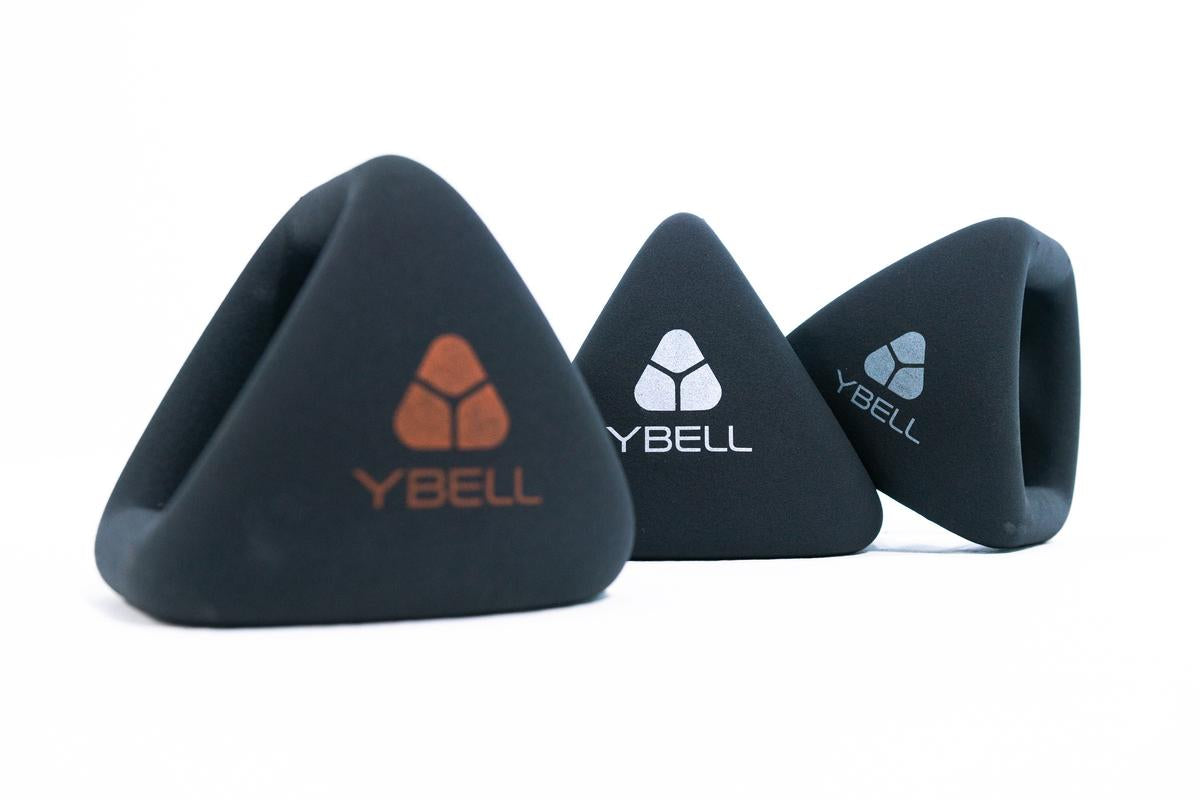Dumbbells are great free weights that are most often used for pecs and upper-body strength and unilateral movements to correct muscle imbalances. But did you know that they’re also great for lower-body workouts? Whether it’s leg day or you’re looking for ways to train your glutes, dumbbell exercises can help you accomplish your goals from the comfort of your home gym.
This blog will discuss the benefits of working out your glutes with dumbbells, explain how to do dumbbell glute exercises, and offer some tips for training your glutes. Let's get to it!
Your Gluteal Muscles Explained
Your glutes consist of three superficial hip muscles that are posterior to the pelvis. They are the gluteus minimus, medius, Maximus, and the much lesser-known tensor fasciae latae muscles.
The gluteal muscles help to stabilize your upper body and pelvis and extend the hip. The gluteal muscles are responsible for the abduction and extension of your thighs, as well as the adduction, external rotation, and internal rotation of your thighs.
Gluteus Minimus
The gluteus minimus is the smallest and deepest of the gluteal muscles. It's very similar in function and structure to the gluteus medius and acts in conjunction to abduct and medially rotate the thighs.
Its main functions are:
- Hip abduction
- Stabilizing the hip joint
- Stabilizing the pelvis for single-limb gait support
- Medial (internal) rotation of the thigh
Gluteus Medius
The gluteus medius is located on the lateral aspect of the upper buttock and is mostly covered by the gluteus maximus.
Its main functions are:
- Stabilizing the hip joint
- Abduction at the hip joint
- Assist in flexion, medial rotation, and lateral (external) rotation of the hip
- Maintaining frontal plane stability of the pelvis
- Supports the opposite side of the pelvis when walking, running, or bearing weight on one leg
Gluteus Maximus
The gluteus maximus is the largest and heaviest muscle in your body. As such, it has the most ability to generate power and force.
Its main functions are:
- Lateral rotation, abduction, and primary extensor of the thigh
- Maintaining an erect posture
- Powerful lower limb movements like stepping, climbing, and running
- Works with hamstrings to extend the trunk from a flexed position
Tensor Fasciae Latae (TFL)
The tensor fasciae latae is a thigh muscle about 15 cm in length. The TFL works with the three gluteal muscles to control your hip movements.
Its main functions are:
- Assist with flexion, abduction, and medial rotation of the hip
- Assist with knee flexion and lateral rotation
- Assist in pelvic stability when standing or walking
Tips for Glute Training
As with all strength training and functional fitness, there isn’t a singular way to train your glutes. It all depends on your fitness level and your fitness goals. Here are some general guidelines to consider for your dumbbell glute workouts:
Ways to Tone Your Gluteal Muscles
If you’re happy with the size of your butt, body weight exercises will help you to tone and sculpt your glutes for a firmer physique. Squats, lunges, bridges, and leg lifts with or without bands are excelling at sculpting muscle.
Exercises to Lift Your Butt
The best exercises to lift your buttocks will target your glutes and hamstrings. Floor exercises focusing on contracting and lengthening your hamstrings or standing movements with hip hinges are best. Some examples of movements that will make your glutes pop: are donkey kicks, standard squats, or a single-leg deadlift.
How to Increase Size and Strengthen Your Glutes
While you can increase size and strength with bodyweight exercises, adding free weights like YBells or dumbbells will help you to accomplish your goal faster.
You'll want to focus on volume for hypertrophy (growing the size of your gluteal muscles). Think higher reps (15 to 25) with a challenging but not overwhelming load. You don't want to tire your muscles out too quickly.
If you’re working on strength, you’ll want to focus on your load. Increase the weight and do fewer reps (6 to 12) so you can focus on the time your muscles are under tension.
Workouts to Get a Smaller Butt
We don’t get to control where our bodies store fat. So there’s no magic bullet for losing fat in only one muscle group. However, any form of glute workouts with dumbbells in conjunction with lower body functional fitness movements will help you to burn fat and tone the muscles in your glutes, thighs, and legs.
4 Benefits of Dumbbell Glute Workouts
A glute workout has many benefits, but effectively and efficiently targeting your glutes can be hard to do with standard lower-body exercises. Adding dumbbells or YBells to your movements offers extra resistance and more variety to keep it fun and challenging.
1. Reduced Back Pain
Your glutes control your hip extension and external rotation. Strong glutes lower your back pain by assisting with pelvic, hip, and torso movements. More importantly, your glutes help evenly distribute weight (load) throughout your lower back and legs, which can significantly impact your posture.
2. Improved Balance and Posture
Your glutes are stabilizing muscles that work cohesively with your back and posterior chain muscles to prevent slouching. Additionally, the ability to pivot or change direction when walking and running requires glute strength. Strengthening and growing your glute muscles enhances your ability to quickly change direction with minimal risk of injury.
Your glutes belong to a category of muscles known as stabilizers. They work with other muscles in your posterior chain to help strengthen your back and prevent slouching.
3. Improved Hip, Knee, and Ankle Mobility
Adding dumbbell glute exercises to your workout routine improves your glute strength as well as your hip, knee, and ankle mobility. Your glutes are vital for stabilizing your pelvis and the movement in your hip joints. Strong glutes and stabilized hips mean your knee and ankle joints won’t need to compensate for poor hip mobility — all three joints can work and move cohesively.
4. Makes You a Better Athlete
Functional and resistance training for your glutes helps your balance and agility and improves overall joint mobility. Glutes are vital for acceleration, jumping, and forward propulsion during athletic activities because they create a powerful hip extension. For runners, training your glutes offers improved neuromuscular coordination, which helps you to run faster and with better stride efficiency.
5 Dumbbell Glute Exercises for Home or Gym Training
Try incorporating these proven exercises into your home gym routine to maximize your glute development using dumbbells. (Not sure which dumbbell exercises would work best for your fitness level and goals? Our quick assessment can design a customized glute routine just for you!) These carefully selected movements are perfect for building strength and definition, regardless of your experience level.
1. Weighted Glute Bridge
The weighted glute bridge is a deceiving movement. It looks simple, but it targets so many of your lower-body muscles that you’re definitely going to feel it the next day! When it comes to glute exercises with dumbbells, this one is perfect for beginners and experienced strength trainers alike.
Since it’s floor-based, using an exercise mat would provide extra comfort.
Muscles You’ll Target:
- Gluteus maximus
- Gluteus medius
- Gluteus minimus
- Tensor fasciae latae
- Hip flexors
- Hamstrings
- Abdominals and core
How to Do a Weighted Glute Bridge:
- Lie on the floor (with or without a mat) with your knees bent. Plant your feet flat on the floor about hip-width apart.
- Hold a dumbbell in each hand, resting them just below your hips. This is your starting position.
- Squeeze your glutes and engage your core. Inhale, then push through your heels to lift your hips off the floor. You want to form a straight line from your shoulders to your knees.
- Hold for 2 to 4 seconds at the top of the movement, then exhale and slowly lower your hips to your starting position. This is one rep.
- Repeat for 10 to 12 reps.
Regression / Progression:
Regressions:
- Start with unweighted bridges to get familiar with the movement.
Progressions:
- To challenge your hip stabilizers, add sliders for your feet.
- To challenge your balance and hip stabilizers, put your feet on an exercise ball, forming a straight line from your shoulders to your ankles.
Adjustments for Using YBells:
- Hold each YBell with a center grip to mimic a dumbbell.
2. Sumo Squat
If you’re new to glute exercises with dumbbells, the sumo squat is a great squat variation because it keeps the weight close to the muscles you’re targeting. You’ll also use a wider stance with this squat, which engages your glutes more than a standard squat while enabling you to do more reps to focus on hypertrophy.
Muscles You’ll Target:
- Gluteus maximus
- Tensor fasciae latae
- Quads
- Hamstrings
- Core
How to Do a Sumo Squat:
- Stand with your feet at least, but preferably wider than, shoulder-width apart and point your toes out about 45 degrees.
- Extend your arms down between your legs and hold a dumbbell vertically with both hands on one end. Turn your shoulders down slightly, but be sure to keep your chest open. This is your starting position.
- Inhale, then bend your knees and push your hips back as you lower down into a squat until the dumbbell touches the ground. Try to get your thighs as close to parallel with the ground as possible. Pause at the bottom of the movement to allow your glutes more time under tension.
- Exhale, then drive through your heels to return to your starting position and squeeze your glutes at the top for more muscle activation. This is one rep.
- Repeat for 8 to 10 reps if focusing on strength or 15 to 18 reps if focusing on hypertrophy.
Regression / Progression:
Regressions:
- If you’re having difficulty with the wide stance, try weighted standard squats first.
- Once you’re comfortable with weighted squats, ladder up to bodyweight sumo squats.
- Start with lighter weights when you add the free weights back in.
Progressions:
- Try holding a dumbbell in each hand if you want a heavier load or want to focus on gluteal strength.
- Try holding the weights in a front rack position for more core activation.
- You can also ladder up this movement by raising up just a few inches and returning to the squat position for sumo pulse squats.
Adjustments for Using YBells:
- Try a double grip for better weight distribution when holding a single YBell in both hands. The double grip is used for double-grip med ball exercises, but the versatility of the YBell's multiple handles allows you to use it as numerous tools to adjust to your functional training needs.
- If you’re focusing on gluteal strength and intend to use two YBells, hold them with a center grip to mimic dumbbells.
3. Curtsy Lunge With a Lateral Kick
The curtsy lunge with a lateral kick is an excellent movement to add to your dumbbell butt workout because of how well it engages your lower body. This movement is perfect for strengthening, toning, and sculpting your glutes, as well as engaging your core, thighs, and hips. It's also a great way to gauge whether you have any muscle imbalances that need to be fixed.
Muscles You’ll Target:
- Gluteus maximus
- Gluteus medius
- Gluteus minimus
- Tensor fasciae latae
- Quads
- Hamstrings
- Abdominals and core
- Soleus and gastrocnemius (calf muscles)
How to Do a Curtsy Lunge With a Lateral Kick:
- Stand with your feet hip-width apart, facing forward with your back straight and your chest open.
- Hold a dumbbell in each hand with your elbows bent and palms facing each other, resting the weights on your shoulders. This is your starting position.
- Inhale and engage your core.
- Step your right foot backward diagonally, hitting the ground with the ball of your foot while lowering your right knee, stopping before it touches the ground. Your left knee should simultaneously bend to about 90 degrees.
- Exhale as you push up through your left foot to straighten your left leg while kicking your right leg out to your right side. This is one rep.
- Repeat for 8 to 10 reps, then switch to your left side.
Regression / Progression:
Regressions:
- If you struggle with the lateral kick, try practicing the curtsy lunge as a single movement.
- Once comfortable with the movement, you can start with a small side kick or tap to introduce the lateral movement.
- Continue laddering up your side kick until you can bring your leg to parallel.
Progressions:
- You can upgrade to a more powerful kick by incorporating a basic Karate front kick.
- You can also increase the weight of your dumbbells.
Adjustments for Using YBells:
- You can use a loose grip to use the YBell as a dumbbell when resting it on your shoulders.
- Hold the YBells in a rack position below your chin for an added challenge. This mimics a kettlebell without the discomfort in your wrist and forearm that you'd encounter with the traditional steel ball of a kettlebell.
4. Dumbbell Single-leg Romanian Deadlift
The single-leg Romanian deadlift is one of the most complex hinging glute exercises because it challenges your hip stabilizers and balance. But the challenge comes with many rewards, including reduced muscle imbalances in your hips, fewer hamstring injuries, and muscle growth (hypertrophy) of your glutes. This exercise for glutes with dumbbells is perfect for increasing size and strength.
Muscles You’ll Target:
- Gluteus maximus
- Gluteus medius
- Gluteus minimus
- Hip stabilizers
- Hamstrings
- Quads
- Core
How to Do a Dumbbell Single-let Romanian Deadlift:
- Stand with your feet hip-width apart, keeping a slight bend in your knees. With your arms straight, hold a dumbbell in each hand in front of your quads. This is your starting position.
- Inhale as you shift your weight to your left leg and raise your right leg straight behind your body, hinging at the hips. In the same movement, bring your torso parallel to the floor while lowering the dumbbells toward the floor.
- Keep your back flat. At the bottom of the movement, your torso and right leg should form a straight line from head to foot and be parallel to the floor.
- Keeping your core tight, exhale and push through your left foot to stand up straight and bring yourself back to the starting position.
- Squeeze your butt when you come back to the starting position. This is one rep.
- Repeat for 8 to 12 reps, then switch to your left side.
Regression / Progression:
Regressions:
- If you have trouble keeping your balance, try starting with a standard deadlift.
- Once you become comfortable with that movement, you can perform the single-leg variation with only body weight.
- When you introduce weights back in, try resting your back foot on a chair or weight bench for balance.
Progressions:
- You can increase the weight of your dumbbells for an added challenge.
- Another option is to make this a multiplanar movement by adding a lateral lunge at the end. For this added movement, you’ll want to engage your biceps and curl the weights up toward your chest.
Adjustments for Using YBells:
- You can use a loose grip or center grip to hold the YBells in front of you.
5. Dumbbell Bulgarian Split Squats
The Bulgarian split squat is a powerhouse lower-body functional fitness movement that'll strengthen your glutes, thighs, and calves. And your core and hip stabilizers will also be challenged in this unilateral movement. Experienced weightlifters should add this exercise to their training to improve their deadlift performance. And anyone looking to tone their gluteal physique will want this exercise in their dumbbell butt workout.
Note that a weight bench is needed for this movement, but you can also rest your leg on a chair or any other stationary object.
Muscles You’ll Target:
- Gluteus maximus
- Gluteus medius
- Gluteus minimus
- Tensor fasciae latae
- Hip stabilizers
- Hamstrings
- Quads
- Core
- Soleus and gastrocnemius (calf muscles)
How to Do a Bulgarian Split Squat:
- Stand with your feet shoulder-width apart about 2 feet in front of your weight bench. Hold a dumbbell in each hand with your arms down by your side. Keep your chest up and open and shoulders down.
- Lift your left leg up and place the top of your foot on the bench, keeping your feet the same distance apart. Your right foot should be far enough forward to allow you to lunge comfortably. This is your starting position.
- Inhale, engage your core, then roll your shoulders back and hinge slightly forward as you bend your right knee to lower down into a squat. Maintain the forward lean so your left knee can drop towards the floor as you move into the squat. Stop when your left thigh is parallel to the floor.
- Now exhale, engage your quads and hamstrings, and push through your right foot to return to your starting position. This is one rep.
- Repeat for 6 to 10 reps, then switch sides.
Here's the gear you'll need:
Regression / Progression:
Regression:
- Try this movement with both feet on the ground if you struggle with the unilateral movement.
- From there, try the split squat without weights.
- Start with a smaller weight as you introduce them back in.
Progression:
- You can use heavier weights for more load.
- Another option to ladder up this movement is to use a barbell.
Adjustments for Using YBells:
- Hold the YBells to your sides with a center grip to mimic a dumbbell.
- You can hold the YBells in a rack position below your chin if you're progressing the movement without a barbell.
6. Dumbbell Hip Thrust
The dumbbell hip thrust is a go-to exercise for building glute strength and power, making it a favorite among athletes and fitness enthusiasts aiming to improve lower-body performance. This movement effectively isolates your glutes while also engaging your hamstrings, lower back, and core for a well-rounded lower-body workout. Whether you’re looking to boost your athletic abilities or simply sculpt your glutes, this exercise is a must-have in your routine.
While it’s traditionally performed with a barbell, a dumbbell is a great alternative for beginners or anyone training at home. If you're exploring other options, consider incorporating Bodyweight Exercises to Get a full-body workout at home, which can complement your lower-body routine. You'll need a weight bench or a stable surface to rest your upper back.
Muscles You’ll Target:
- Gluteus maximus
- Gluteus medius
- Gluteus minimus
- Hamstrings
- Core
- Lower back
How to Do a Dumbbell Hip Thrust:
-
Set Up: Sit on the ground with your upper back resting against the edge of a weight bench. Place a dumbbell horizontally across your hips, holding it steady with both hands. Bend your knees and plant your feet flat on the floor, about hip-width apart.
-
Starting Position: Roll your shoulders back, engage your core, and keep your chin slightly tucked to maintain a neutral spine. Your feet should be positioned so your knees form a 90-degree angle at the top of the thrust.
-
Thrust Up: Exhale and drive through your heels to lift your hips toward the ceiling. Squeeze your glutes at the top of the movement, ensuring your hips align with your shoulders and knees. Avoid overextending your lower back.
-
Lower Down: Inhale and slowly lower your hips back to the ground, maintaining control and stopping just before your glutes touch the floor.
-
Repeat: Perform 8 to 12 reps per set, focusing on form and muscle activation.
Regression / Progression:
Regression:
- Start with bodyweight hip thrusts to master the form.
- Use a lighter dumbbell or no weight at all until you feel comfortable.
- Perform the movement with your back on the ground (glute bridge) instead of using a bench.
Progression:
- Increase the weight of the dumbbell for added resistance.
- Try a single-leg hip thrust for a more challenging, unilateral variation.
- Progress to a barbell hip thrust for heavier loads and advanced training.
Adjustments for Using YBells:
-
Hold a YBell across your hips in place of a dumbbell for the same effect.
-
If progressing, you can use two YBells, holding one in each hand with a center grip.
7. Dumbbell Step-Up
The dumbbell step-up is a versatile and functional lower-body exercise that builds strength, balance, and coordination. This compound movement primarily targets your quads and glutes while engaging your core and stabilizing muscles. It's an excellent option for those looking to improve their athletic performance, enhance everyday movement, or tone their legs and glutes.
This exercise requires a sturdy box, bench, or platform that allows your knee to form a 90-degree angle when your foot is placed on it. A pair of dumbbells add resistance to increase the challenge and effectiveness, but you can also experiment with a TRX or resistance band for variety. While a TRX helps focus on stability and control by utilizing body weight, a resistance band provides constant tension, making each step more dynamic.
Muscles You’ll Target:
-
Quadriceps
-
Gluteus maximus
-
Gluteus medius
-
Hamstrings
-
Calves (soleus and gastrocnemius)
-
Core
-
Hip stabilizers
How to Do a Dumbbell Step-Up:
-
Set Up: Start by standing tall in front of a sturdy box or bench. Hold a dumbbell in each hand with your arms fully extended by your sides. Keep your chest up and shoulders back.
-
Starting Position: Place your right foot firmly on the box or bench. Make sure your entire foot is on the surface for stability, and your knee is aligned with your toes.
-
Step Up: Engage your core, exhale, and drive through your right foot to lift your body onto the box. Keep your left foot off the surface and your right leg fully extended at the top. Avoid pushing off with your left foot to maximize the work on your right leg.
-
Lower Down: Inhale and slowly lower your left foot back to the ground, keeping control. Follow with your right foot to return to the starting position.
-
Repeat: Perform 6 to 12 reps on one leg before switching to the other side.
Regression / Progression:
Regression:
- Perform the exercise without weights to focus on balance and form.
- Use a lower step or platform if you find it difficult to maintain stability.
- Place your hands on your hips instead of holding dumbbells.
Progression
- Increase the height of the step or box for a greater range of motion.
- Use heavier dumbbells to increase resistance.
- Add a knee drive at the top to engage your core and improve balance.
Adjustments for Using YBells:
-
Hold a YBell in each hand using a center grip to mimic dumbbells.
-
If progressing, you can hold the YBells in a front rack position for added core engagement.
8. Dumbbell Fire Hydrant Circle
The dumbbell fire hydrant circle is a powerful isolation exercise for targeting your glutes and improving hip mobility. This move strengthens the gluteus medius, which plays a key role in hip stability and balance, making it ideal for athletes and anyone looking to sculpt their lower body. Adding a dumbbell provides resistance to increase intensity, while the circular motion engages a broader range of muscles and improves joint function.
This exercise is versatile and works well for gym or home workouts. It requires a small dumbbell that fits comfortably behind your knee, or alternatively, you can use ankle weights or resistance bands if preferred.
Muscles You’ll Target:
-
Gluteus medius
-
Gluteus maximus
-
Hip stabilizers
-
Core
-
Tensor fasciae latae
-
Hamstrings
How to Do a Dumbbell Fire Hydrant Circle:
-
Set Up: Begin on all fours in a tabletop position, with your hands directly under your shoulders and your knees under your hips. Place a dumbbell securely behind your right knee and squeeze your leg to hold it in place. Engage your core and keep your back flat.
-
Starting Position: Keep your hips level and your gaze slightly forward. Ensure your spine remains neutral throughout the movement.
-
Lift and Circle: Slowly lift your right leg out to the side, keeping your knee bent at 90 degrees. Draw a controlled circular motion with your knee in the air, moving clockwise for 6 to 8 reps.
-
Reverse Direction: After completing your clockwise reps, reverse the motion and draw counterclockwise circles for the same number of reps.
-
Switch Sides: Lower your right leg back to the starting position, remove the dumbbell, and repeat the movement on your left side.
Regression / Progression:
Regression
- Perform the movement without a dumbbell to focus on form and control.
- Reduce the range of motion if you struggle to maintain balance or stability.
- Use a resistance band around your thighs for lighter resistance.
Progression
- Use a heavier dumbbell for added intensity.
- Increase the size of the circular motion to engage more muscles.
- Add a pause at the top of each circle to increase time under tension.
Adjustments for Using YBells:
-
Replace the dumbbell with a YBell by holding it behind your knee in the same manner.
-
Alternatively, place the YBell on the floor and tap it lightly with your knee at the bottom of each circle for an added challenge to your control.
Start Exercising Your Glutes Today!
There’s no doubt that dumbbells are very effective for training your glutes. You can use the weights in a variety of ways to target different muscle groups. Grab a pair of dumbbells today and you can exercise your glutes from your home.
Consider trying TRX’s rubber-hex dumbbells, which have a sturdy metal grip and hexagonal shape, for optimal clamping power. Or, try our new award-winning YBells, a multi-functional weight that can act as a dumbbell, kettlebell, or medicine ball.
Either way, both types of weights will help you tone and sculpt your butt so that you achieve the shape you want.



